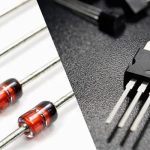Introduction
Ever wondered how electricity travels from power plants to your home, keeping your lights on and devices charged? The secret lies in electrical transformers—the unsung heroes of power distribution! Transformers help step voltage up or down, making electricity transmission safe and efficient. But how do they work? Let’s break it down in the most fun and easy-to-understand way possible using relatable analogies! 🚀⚡
🧠 What Is an Electrical Transformer?
A transformer is a device that changes voltage levels in an alternating current (AC) electrical system. It can either:
- Step Up Voltage: Increase voltage for efficient long-distance power transmission.
- Step Down Voltage: Decrease voltage for safe use in homes and industries.
📢 Important Note: Transformers only work with alternating current (AC), not direct current (DC).
🎭 Fun Analogy: The Language Translator! 🗣️📢
Think of a transformer like a language translator at a global conference:
- The speaker (power plant) speaks in high-voltage language that can travel long distances efficiently.
- The translator (transformer) steps down the language into simpler words so the audience (your home appliances) can understand it.
Just like a translator adjusts language complexity, a transformer adjusts voltage levels to ensure electricity is delivered safely and efficiently!
⚙️ How Do Transformers Work? (The Science Behind It!)
A transformer operates on the principle of electromagnetic induction discovered by Michael Faraday. It has two main parts:
1️⃣ Primary Coil: The coil where AC voltage enters.
2️⃣ Secondary Coil: The coil where transformed voltage exits.
3️⃣ Iron Core: A magnetic core that transfers energy between coils.
Step-by-Step Process:
- ⚡ AC voltage flows through the primary coil, creating a changing magnetic field around it.
- 🧲 This magnetic field passes through the iron core, reaching the secondary coil.
- 🔄 The changing magnetic field induces a voltage in the secondary coil.
- 🔌 Depending on the coil ratio, voltage is stepped up or stepped down before being delivered to its destination.
📢 Key Concept: More coil windings in the secondary coil = Step-Up Transformer (higher voltage).
Fewer coil windings in the secondary coil = Step-Down Transformer (lower voltage).
🚗 Fun Analogy: The Bicycle Gear System! 🚴♂️
Imagine riding a bicycle with gears:
- If you shift to a higher gear, you go faster but need more effort (Step-Up Transformer: higher voltage, lower current).
- If you shift to a lower gear, it’s easier to pedal but you go slower (Step-Down Transformer: lower voltage, higher current).
Just like gears optimize your cycling efficiency, transformers optimize electricity flow across power grids!
🔄 Types of Transformers & Their Uses
| Type | Function | Example Use |
|---|---|---|
| 🔼 Step-Up Transformer | Increases voltage, decreases current | Power stations to transmission lines |
| 🔽 Step-Down Transformer | Decreases voltage, increases current | Power lines to homes, phone chargers |
| 🔄 Isolation Transformer | Provides electrical isolation, keeps voltage the same | Safety circuits, medical equipment |
| 🔀 Autotransformer | Uses a single winding for both primary and secondary | Voltage regulators, industrial applications |
| ☀️ Instrument Transformer | Measures current and voltage | Electric meters, sensors |
⚡ Why Do We Need Transformers?
1️⃣ Long-Distance Power Transmission:
- Without transformers, power lines would lose too much energy due to resistance.
- Step-up transformers increase voltage for efficient transmission, reducing losses.
2️⃣ Safe Home Electricity:
- Your home appliances run on 110V–240V, not the thousands of volts used in power lines.
- Step-down transformers lower voltage for safe use.
3️⃣ Charging Devices (Phone Chargers!):
- Your phone battery needs 5V, but wall outlets provide 110V–240V.
- Your charger contains a mini transformer to step down the voltage safely.
🔌 Real-Life Examples of Transformers in Action
📡 Power Transmission:
- Power stations use step-up transformers to send high-voltage electricity over long distances.
- Local substations use step-down transformers to reduce voltage for homes and businesses.
📱 Phone and Laptop Chargers:
- Chargers use small transformers to reduce high-voltage AC to safe low-voltage DC.
🚆 Electric Trains & Subways:
- High-power transformers adjust voltage for efficient operation of trains and metro systems.
🎸 Audio Equipment & Amplifiers:
- Transformers in speakers and microphones regulate voltage for clear sound output.
🏥 Medical Equipment:
- Isolation transformers protect patients and sensitive devices in hospitals.
🚀 The Future of Transformers: Smarter, Smaller, and More Efficient!
With advancements in technology, transformers are becoming smarter and more energy-efficient. Innovations like:
- Solid-State Transformers (SSTs): Digital transformers that can dynamically adjust voltage.
- Superconducting Transformers: Using superconductors to reduce energy loss.
- Wireless Power Transfer: Eliminating the need for physical transformers in some applications (think wireless charging for cars and homes!).
📝 Conclusion
Electrical transformers are the unsung heroes of our power system, ensuring electricity reaches us efficiently and safely. Whether it’s stepping up voltage for transmission or stepping it down for home appliances, transformers play a vital role in our daily lives. So next time you charge your phone or turn on a light, remember the invisible power of transformers working behind the scenes! ⚡💡🔋


